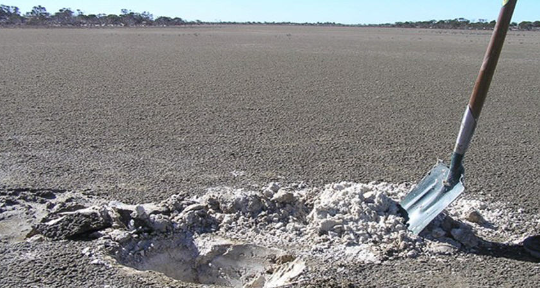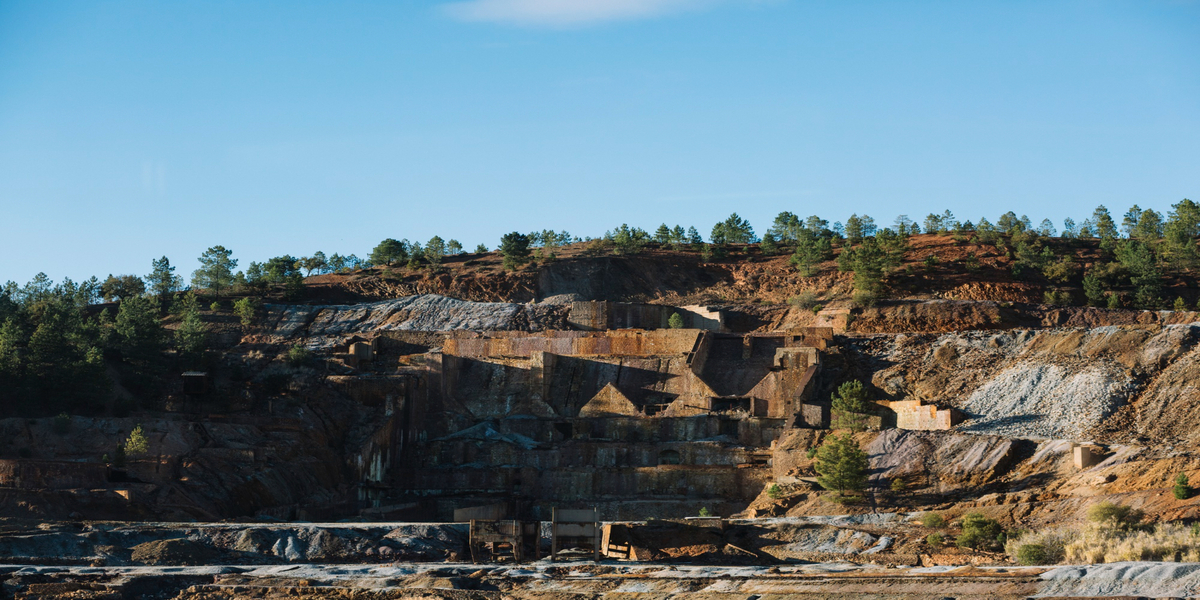Introduction
Mining is integral to our industrial society, providing raw materials for various industries. Silica and gypsum are two minerals extensively mined for their diverse applications. However, the environmental repercussions of mining operations are often overlooked. This blog aims to shed light on the environmental impact of silica and gypsum mining. By examining the extraction processes, ecosystem disturbances, water and air pollution, and the long-term consequences on surrounding communities, we can better understand the hidden costs of these mining activities and explore sustainable alternatives for a greener future.
Impacts of Silica Mining
Silica mining, the extraction of silica (silicon dioxide) from the Earth’s crust, significantly impacts the environment, human health, and communities near mining operations. Silica is widely used in various industries due to its unique properties, but the extraction process and associated activities can have detrimental consequences.
Environmental Impacts Silica mining can lead to severe environmental impacts
Clearing vegetation and soil erosion during mining operations can result in habitat destruction, biodiversity loss, and ecosystem disruption. The removal of vegetation can also contribute to increased runoff and soil degradation. Additionally, the excavation of mines and deposition of waste materials can alter the topography and hydrology of the area, affecting natural drainage patterns and water availability.
Air Pollution and Respiratory Health Risks
One of the major concerns associated with silica mining is the generation of fine silica dust, known as respirable crystalline silica (RCS). The crushing, grinding, and handling of silica ore release RCS particles into the air, which workers and nearby communities can inhale. Prolonged exposure to RCS can lead to serious respiratory diseases such as silicosis, lung cancer, and chronic obstructive pulmonary disease (COPD).
Water Resource Contamination
Impacts of Silica mining activities include contamination of water resources. The extraction process often requires significant amounts of water for washing and processing the silica ore. Improper handling and discharge of wastewater containing chemicals and suspended solids can pollute surface and groundwater sources. This contamination can harm aquatic ecosystems, water quality, and the availability of clean water for surrounding communities.
Socio-economic Implications
Silica mining can have socio-economic consequences for nearby communities. Mining operations may lead to the displacement of local communities and the loss of traditional livelihoods, such as agriculture and fishing. Additionally, mining activities can create social disruptions, including increased migration, changes in community dynamics, and conflicts over resource access and land rights.
Mitigation and Regulation
To mitigate the impacts of silica mining, regulatory measures and responsible practices are essential. Implementing stringent environmental regulations can ensure the proper management of waste materials, including the safe disposal of tailings and the prevention of water contamination. Dust control measures, such as wetting or covering operations, should be implemented to reduce the release of RCS particles into the air. Adequate ventilation systems and personal protective equipment must be provided to protect the health and safety of workers.
Community Engagement and Sustainable Mining Practices
Engaging with local communities and incorporating their perspectives in decision-making is crucial for sustainable silica mining. Implementing community development programs, such as education and skills training, can support the socio-economic well-being of affected communities. Encouraging the adoption of sustainable mining practices, including land reclamation and biodiversity restoration, can help minimize the long-term environmental impacts of silica mining.
In conclusion, silica mining significantly impacts the environment, human health, and communities. Environmental degradation, air pollution, water contamination, and socio-economic disruptions are some of the key concerns associated with silica mining. Implementing strict regulations, adopting responsible mining practices, and engaging with local communities are essential steps towards minimizing these impacts and ensuring the sustainable extraction of silica.
Impacts of Gypsum Mining:

Alarming Impacts of gypsum mining on Ecosystems and Water Resources
Gypsum mining, predominantly carried out for its use in the construction industry, has its own set of environmental challenges. Gypsum extraction through open-cast mining can lead to habitat fragmentation, biodiversity loss, and altered soil composition. The process involves removing overlying layers of soil and vegetation, resulting in irreversible damage to local ecosystems. Furthermore, gypsum mining often requires explosives, further intensifying the impact on surrounding flora and fauna.
Gypsum mining is the extraction of the mineral gypsum, a soft sulfate mineral composed of calcium sulfate dihydrate, from the Earth’s crust. Gypsum is widely used in various industries, including construction, agriculture, and manufacturing. It is primarily used in the production of plaster, wallboard, cement, and fertilizers. However, gypsum mining activities can have several environmental and socio-economic consequences.
Environmental Consequences of Gypsum Mining
Gypsum mining can lead to various environmental impacts. The extraction process often involves clearing large areas of land, resulting in habitat destruction and loss of biodiversity. The removal of vegetation and topsoil can lead to soil erosion and degradation. Mining operations can also disrupt hydrological systems, affecting water flow patterns and potentially leading to the drying up of nearby water sources. Additionally, the disposal of waste materials, such as overburden and tailings, can impact nearby ecosystems and water bodies.
Health and Safety Concerns
Gypsum mining poses certain health and safety risks to workers. The extraction and processing of gypsum can generate dust, including respirable crystalline silica, which can be hazardous if inhaled. Prolonged exposure to gypsum dust can cause respiratory issues, including silicosis and other lung diseases. Adequate safety measures, such as dust control systems and personal protective equipment, should be implemented to protect workers’ health.
Socio-economic Implications
Gypsum mining can have socio-economic consequences, both positive and negative. On the positive side, mining activities can contribute to local employment opportunities, economic growth, and infrastructure development in mining regions. The industry may also provide a source of revenue for governments through taxes and royalties. However, the negative impacts should not be overlooked. Mining operations can disrupt local communities, leading to the displacement of people and the loss of traditional livelihoods. Moreover, the unsustainable extraction of gypsum can deplete resources, leaving behind degraded landscapes and limited opportunities for future economic activities.
Mitigation Measures
To address the impacts of gypsum mining, effective mitigation measures should be implemented. These measures include adopting sustainable mining practices that minimize environmental impacts and promote ecosystem restoration. Strategies such as land reclamation, soil conservation, and water management can help restore mined areas and mitigate soil erosion and water resource issues. Furthermore, ensuring proper ventilation and dust control measures can protect the health and safety of workers.
Promoting Alternatives and Recycling
To reduce the demand for gypsum mining, promoting alternatives and recycling can be beneficial. For example, using recycled gypsum products can help conserve resources and reduce the environmental footprint associated with mining. Additionally, exploring alternative materials for construction and manufacturing purposes can help diversify the industry and minimize the reliance on gypsum extraction.
In conclusion, gypsum mining has several environmental, health, and socio-economic consequences. Habitat destruction, soil erosion, water resource impacts, health risks for workers, and disruptions to local communities are among the key concerns associated with gypsum mining. By implementing appropriate mitigation measures, promoting sustainable practices, and exploring alternatives, the negative impacts of gypsum mining can be minimized while ensuring the continued availability of gypsum for various industries.
Sustainable Solutions for Responsible Mining of Silica and Gypsum to reduce Impacts
Responsible mining refers to the extraction of minerals in a manner that minimizes environmental impacts of silica and gypsum, prioritizes worker safety, respects local communities, and promotes sustainable practices. Applying sustainable solutions to silica and gypsum mining can help mitigate the negative consequences associated with these activities.
Environmental Stewardship
One sustainable solution for responsible mining is implementing strong environmental stewardship practices. This includes conducting thorough environmental impact assessments before commencing mining operations to identify potential risks and develop appropriate mitigation strategies. Additionally, adopting sustainable land management techniques such as land reclamation and reforestation can help restore ecosystems and minimize habitat destruction. Using advanced technologies for dust control and wastewater management can also reduce pollution and preserve water resources.
Worker Safety
Ensuring the safety and health of workers is crucial for responsible mining. Companies should prioritize implementing robust health and safety protocols, including providing proper training and protective equipment to minimize exposure to hazardous substances such as respirable crystalline silica. Regular monitoring and assessments of air quality and worker health can help identify and address potential risks. Collaborating with local health authorities and providing access to healthcare services for workers can further enhance worker well-being.
Stakeholder Engagement and Community Development
Engaging with stakeholders and fostering positive relationships with local communities is a vital aspect of responsible mining. Mining companies should involve community members in decision-making processes, seeking their input and addressing their concerns. Implementing transparent communication channels and providing timely and accurate information about mining operations can build trust and ensure the community’s participation in the benefits generated by mining activities. Supporting community development initiatives, such as education and infrastructure projects, can further contribute to long-term sustainability.
Recycling and Circular Economy Approaches
Promoting recycling and circular economy approaches can reduce the reliance on primary mineral extraction. Companies can invest in research and development to find innovative ways to recycle and reuse silica and gypsum waste products. This can involve developing technologies for the recycling of gypsum-based materials, encouraging the use of recycled materials in construction and manufacturing, and exploring alternative materials with similar properties to reduce the demand for primary mineral extraction.
Alarming Impacts on Ecosystems and Water Resources
Gypsum mining, predominantly carried out for its use in the construction industry, has its own set of environmental challenges. Gypsum extraction through open-cast mining can lead to habitat fragmentation, biodiversity loss, and altered soil composition. The process involves removing overlying layers of soil and vegetation, resulting in irreversible damage to local ecosystems. Furthermore, gypsum mining often requires explosives, further intensifying the impact on surrounding flora and fauna.
Collaboration and Industry Standards
Collaboration among mining companies, industry associations, governments, and non-governmental organizations are essential for establishing and implementing responsible mining practices. Developing industry standards and certifications for responsible mining can provide a framework for companies to follow and allow for independent assessments of their operations. Sharing best practices and lessons learned can foster continuous improvement across the mining sector.
In conclusion, responsible mining of silica and gypsum requires adopting sustainable solutions that prioritize environmental stewardship, worker safety, community engagement, and recycling. By implementing these strategies, mining companies can mitigate the negative consequences of mining activities, contribute to sustainable development, and ensure the long-term availability of these minerals for various industries.

